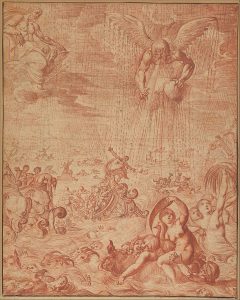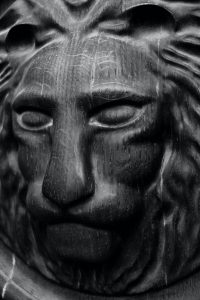Chapter Three – Myth & Archetype
Andy Gurevich
By now, you have most likely noticed that there are common ideas, themes or objects that recur in some of these myths. Take the flood, for example. If you look at myths from across the globe, almost all of them have a flood story of some sort. How can we explain this?

One way is that these myths contain a historical account of a great flood. We know there was a huge flood in the area of the eastern Mediterranean Sea into the Black Sea. Depending on the source, it happened anywhere from 11,000 BC to 3,000 BC. It is possible as the last great ice age ended, it did inundate this area. Check out this Historical Evidence for the Great Flood.
But areas that are far inland, high in elevation and otherwise not likely to be flooded have these deluge stories too. How can historical fact explain this? Archeologists are fairly certain that the entire globe was not under water.
Another explanation may be that through trade routes or conquest, these stories were shared with new populations who found them so compelling they incorporated these myths into their own. Again the same problem presents itself: were there trade routes between, say, Greece and Argentina or the southwestern United States. It is unlikely. Remember these early societies did not have Facebook or Twitter; in fact, they were unaware the rest of the globe even existed.
One explanation that fits nicely, although there is no real proof in the scientific sense, is the idea of archetypes and the collective unconscious. These ideas were put forth by the 20th century psychiatrist, Carl Gustav Jung. His ideas are highly speculative, but they do offer an avenue for studying these recurrent ideas we see in myth.
Basically, what Jung said is that there exists in every humans mind the collective unconscious. This is the area of our psyche where dreams and myths are stored. They contain themes and ideas that humans have had in common since the beginning of human existence. We can see these ideas and themes in the myths: the flood, the creation of man from clay (or other substance that is critical to sustain life), symbols like the world tree, or the world egg. These common symbols, themes and patterns are called archetypes. To clear up the difference:
- A symbol is an object that stands for something else or calls that something else to mind. A symbol is cultural, shared by a group of people. We do not naturally understand what a symbol means; we must learn its meaning. The alphabet and language are symbols. The logos of companies are symbols. Like the Nike swoosh, we need to learn to associate the symbol to what it is referring to (its referent).
- An archetype is a symbol that is not tied to one culture. It is shared by all cultures, across time. We can readily see, and respond to, archetypes we see in movies: the villain, the hero, the wise old man (The Lord of the Ringstrilogy is a good film to see archetypes). Archetypes can also be objects-the circle, the mandala. They can be themes-the heros journey, travel to the underworld, fighting dragons (or some such creatures). The thing that distinguishes archetype from symbol is that all humans respond and understand the archetypes in similar ways.
If we think back to myth and metaphor, it may be easier to understand the idea of the collective unconscious and archetype. Our myth and dreams are metaphors and they use the archetypes to manifest themselves to us. That accounts for the similarity of the ideas and symbols in myths and our dreams. So as an explanation for the existence of myth across the globe as well as the commonality of the ideas and symbols in myth, this explanation serves a purpose.

It’s an interesting look at the consciousness of mankind. We are really linked in our myths and dreams. Carl Jung says these symbols are never clearly defined or fully explained, as they are part of the unconscious. We can learn the meaning of archetypes, but they become understandable only on an individual basis. Again, Jung says that archetypes are, at the same time, image and emotion. When there is merely the image, then there is a word-picture with little consequence, but when charged with emotion, it becomes dynamic.
I think of the Goya picture of Cronus devouring his children. It is both an image that is symbolic, but also arouses deep emotional responses. Think also of those images we relate to evil, like snakes. Many people are afraid of snakes, spiders, bats things we fear and associate in ways with evil and danger. That’s how an archetype works. We unconsciously associate the image and emotion and respond.
(For more information on archetypes and the collective unconscious, see Man and His Symbols edited by Carl G Jung. Material on Jung is from this book.)
The myths for this week:
- History of Navajo Myth
- The Emergence, (Navajo)
- History of Aztec Myth
- The Creation Cycle, (Aztec)
- History of Maori Myth
- The Creation Cycle (Polynesia/Maori)

